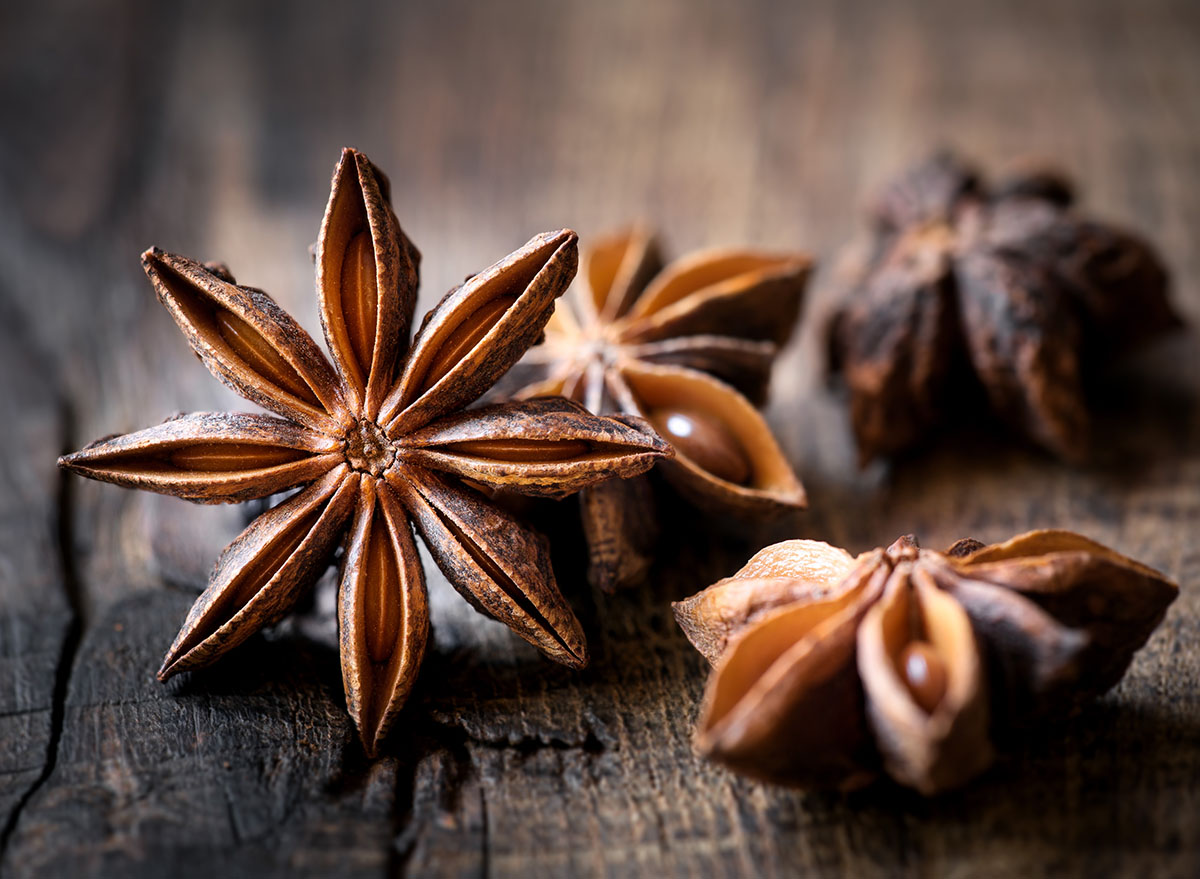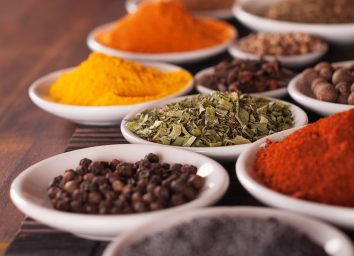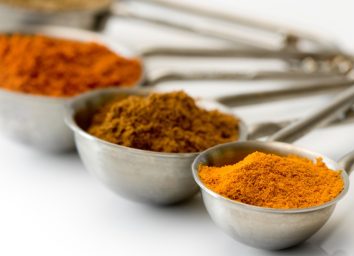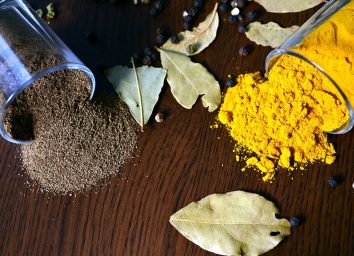Star Anise: What It Is, and How to Use this Strange-Looking Spice

Most spices are purchased ground, so we never get to see what they look like before they were bottled and put on the grocery store shelves. Some are sold whole, though, and one that may have caught your eye is star anise. This symmetrical, star-shaped pod is beautiful, and it looks more like a fall tabletop decoration than something you’d eat. But star anise is actually a spice used for its aromatic nature and healing properties. Here’s everything you need to know about this anti-inflammatory spice.
What is star anise?
Surprisingly, although you find it in the spice aisle…it’s actually a fruit! Star anise pods grow on evergreen trees in the magnolia family (Illicium verum) native to northeast Vietnam and southwest China. They often get confused with the similarly named anise (or aniseed), but they bear no relation.
Star anise are picked unripe and green, before being dried and sold as the small, hard, and brown pods we all know. They are typically seen with eight points on the star, but can range from six to 10, with one seed in each point. It is mostly used as a spice, usually whole, but it cannot be ingested, so it has to be strained out after cooking. It will infuse whatever it’s been cooking in and impart flavor, as well as antioxidants and anti-inflammatory benefits.
What does star anise taste like?
Star anise has a licorice-like aroma and flavor, but it is also warming and earthy, so it plays well with other fall and holiday spices like cinnamon, nutmeg, and allspice. Its subtle sweetness works well blended into mulled wine or spiced cider, but it can also be used in savory blends like Chinese five-spice, which has Szechuan peppercorns, fennel, cinnamon, and cloves. It is pungent, so a little goes a long way—however you use it, don’t let it overpower your palate.
How to use star anise
In the winter, mulled cider is a great spiced holiday cocktail to have in your back pocket. When making mulling spice (usually with cinnamon, nutmeg, star anise, ginger, and orange peel), keep star anise whole and steep it in cider or wine to infuse, then remove after mulling so it does not overpower the blend. Go easy on the ratio of star anise to other spices because it is strong.
It is also great for infusing flavor into soups, like Vietnamese pho noodle soup or for infusing any broth with a little extra flavor. It is one of the key ingredients in Chinese five-spice as well, which you can mix into a stir-fry, use to marinate chicken, or toss with roasted nuts for a simple snack. Overall, it plays well with other warming spices like cinnamon, cloves, and allspice, so try it in places you might use those—flavoring a fall-themed coffee, making a chai blend, or mixing into Indian or other Asian dishes.
In addition to culinary uses, star anise oil can also be used in aromatherapy to help relieve symptoms of colds and congestion, muscular aches and pains, and digestion.
Where to buy star anise
You can find star anise sold in whole pods at almost any grocery store or on Amazon. Broken pods are okay too, so if you find them, they may cost less, too. Essential oils—for aromatherapy, not consuming orally—can also be purchased in select health and wellness stores or online.








